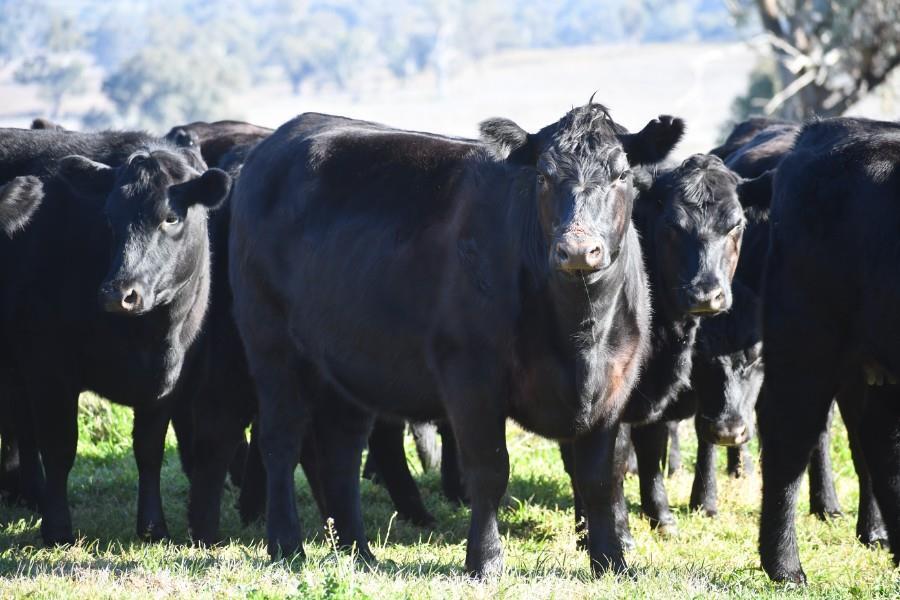The Australian Beef Market in 2025: An Absolute Cracker
In this column in July, the StoneX H2 2025 Australian Cattle & Beef Market Outlook’s bold calls were analysed and assessed for what the final 6...

Providing market insights at this stage in the cattle cycle is incredibly difficult, as you can become somewhat of a self-fulfilling prophecy. The more we talk about drier seasonal conditions and falling cattle prices, the more negative the sentiment becomes. In theory, that leads to less buying and more selling, which in turn pushes the price down further. We can’t, however, hide from reality. Instead, we should focus on the facts and evidence, rather than the rhetoric.
Key Points
Young cattle prices have been underperforming expectations all year
Cattle prices expected to hit the bottom in April/May 2024
We could see an EYCI of less than 400c before Christmas
In January, if you had been bold enough to forecast the EYCI hitting 450c/kg cwt this year, you would have been laughed out of town. However, it would have been the simplest and most accurate forecast to make. Simplest because the EYCI has been on a linear path for the past 12 to 24 months, falling by an average 0.95%, or 7.2c, each week. If this trend was to continue, the EYCI would reach 358c by December 1, 2023.

Figure 1: Weekly EYCI prices, Jan-22 to Sep-23. Source: MLA
In the May Cattle Market Outlook, I raised the idea that prices would follow the same trajectory until something in the market actually changed, not just because it had gotten too high or too low.
It is very clear that restocking demand has diminished significantly and is not contributing any substantial competition to the market. The major deciding factor moving forward is the balance between high domestic supply of cattle and export demand.
Lower US production is supporting export demand, but drier seasonal conditions are also leading to higher turn-off of slaughter cattle. As a result, we have seen export volumes increase in line with production while prices have continued to decrease.

Figure 2: Weekly cattle slaughter numbers and EYCI prices, Dec-19 to Sep-23. Source: MLA
Figure 3 shows the MLA consensus forecast in the yellow line, which was included in their June Cattle Projections. It also shows the AuctionsPlus forecast, which we contributed to the June consensus forecast. Prices were tracking in line with the consensus forecast, but have recently fallen to be more in line with our downside forecast.

Figure 3: Weekly EYCI forecast scenarios, Jan-22 to Sep-23. Source: MLA, AuctionsPlus
It's also important to remember the significant export demand created from the African Swine Fever (ASF) outbreak in China. This created a floor in prices in 2018-2019 but was not enough to raise them.
Whether or not a decline in US production will have the same impact as ASF is anyone’s guess. History would tell us that even if it has a bigger impact, it still won’t turn prices around, just provide a floor.
At some point, prices will find support at a lower level and stabilize. That point in time is getting closer, but it is still likely to be on the other side of the upcoming summer. Previous analysis suggested the current cycle may follow the same path and timeframe of the previous cycle. That would mean an absolute price bottom in May 2024.

Figure 4: Monthly average EYCI, Jan-14 to Sep-23. Source: MLA
Increased turn-off of livestock into late spring and summer poses further downside risk to prices. Some much-needed rain at the right time would see supply held back and support prices.
We can see from analysing historical data that we tend to go through a drier period before that dry period can then ‘break’ and we enter another restocking period.
The underlying fundamentals and long-term trend of the red meat industry is incredibly positive. Our access to international markets has never been so good, and the long-term future demand prospects in those markets will continue on a positive trajectory despite short-term challenges.
Restocker prices have fallen further than prime or processor prices. If you have feed, there are trading opportunities out there. If you don’t have feed, it is time to implement those drought mitigation strategies.
As always, if you have any questions or suggestions, feel free to email me at dthomson@auctionsplus.com.au
.jpg)
In this column in July, the StoneX H2 2025 Australian Cattle & Beef Market Outlook’s bold calls were analysed and assessed for what the final 6...
.png)
Each December we save the last article of the year for a bit of a crystal ball gaze, as we try to bring together market fundamentals and work out...
.png)
Australia’s wool market posted another strong performance this week, with all micron categories attracting solid support across the three selling...